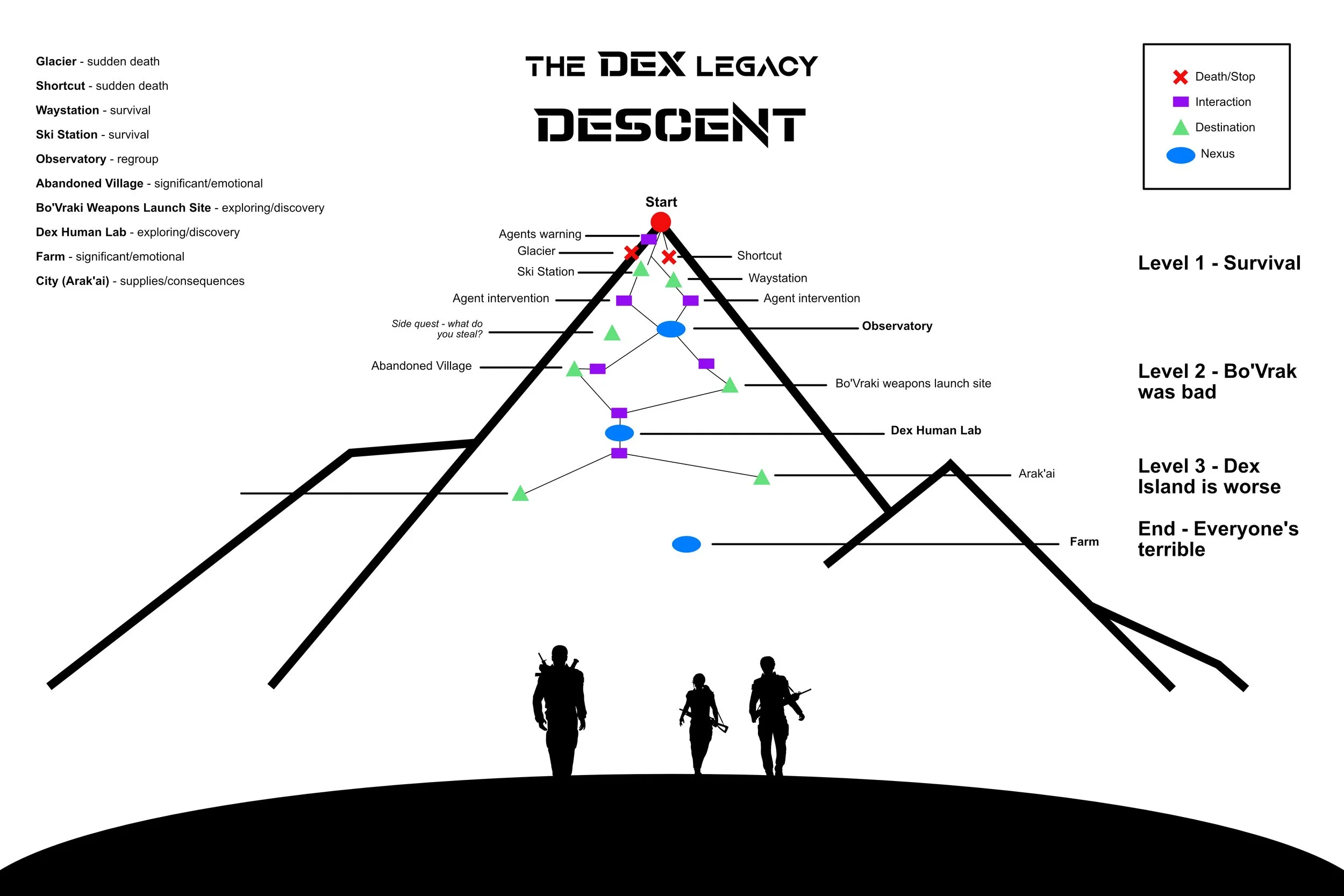
A Narrative Game
Level 1 Coming Soon
As part of Greg Buchanan’s Writing Interactive course I’m creating a choice-based narrative game. The plan is to combine visuals and scripted audio cutscenes using the actors from the audio drama.
The Audio Drama
The Game
Synopsis:
Varian, Isra and Ren, primary prototypes of the Dex Enhanced Soldier Programme and adopted children of President Nathaniel Dex, are awoken in the middle of the night by the head of the Dex Spy Network, Tristan Krail. They’re taken by force to the top of the tallest mountain on Dex Island, and instructed to reach the bottom without being seen. There are Agents patrolling the mountain, watching for signs and preparing to follow any trail. This extreme training exercise sees the three teenagers left on the snow-covered summit in nothing but their thin training clothes. They know that if they fail, they will be forced to do it again and again until they succeed, and if they refuse they will face dire punishment. As they descend, details of their cruel upbringing are revealed along with discoveries about more unpleasant Dex research projects.
Level One is about surviving the night and making it below the snow line to an abandoned observatory. There are two ways the player can choose do this and on the first try, they will fail. This is inevitable. We then enter a short cutscene and the exercise repeats, but this time Varian, Isra and Ren are a little less reckless and a little more ruthless.
Character Profiles
Varian, Isra and Ren are known to me. I have over 600,000 words across four novels dedicated to them, plus 3 seasons of an audio drama. Knowing how they would react in any given situation is not an issue. What is challenging is providing distinct reaction choices that feel genuine to the player, while not breaking the core of who each of them is.
To solve this problem I used a character-profile method employed by the Hasbro team. In their Cluedo brand guidelines they provide characteristics that belong to each iconic figure, in an “Always, Sometimes, Never” breakdown. This allows freedom of expression within defined constraints that keep the character consistently recognisable across multiple iterations of the game.
I took this and broke it down one stage further: Always, Sometimes Good, Sometimes Bad, Never.
This meant that I could provide at least three distinct reactions for the player while keeping the character true to themselves.









